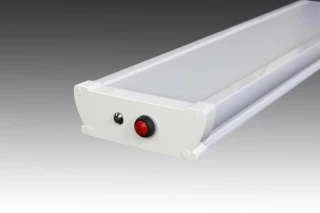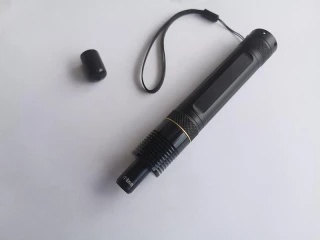Incoherent Light Sources
Explore a vast collection of Incoherent Light Sources from over 116 global suppliers on FindLight. Choose from a wide range of Lighting Solutions including Light Emitting Diode (LED) sources, Lamps, Calibration Standards, and UV Light Systems.
Frequently Asked Questions
What is the difference between incoherent and coherent light sources?
Incoherent light sources emit light in a broad range of wavelengths and do not have a fixed phase relationship between the emitted photons. They include incandescent lamps, discharge lamps, and light-emitting diodes (LEDs). Coherent light sources, on the other hand, emit light with a well-defined phase and polarization, and include lasers and other coherent sources. Coherent sources have unique properties such as high brightness, narrow linewidth, and long coherence length, but are more complex and expensive than incoherent sources.
How can the spectral properties of incoherent light sources be characterized?
The spectral properties of incoherent light sources can be characterized using spectrometers, which can measure the intensity and wavelength distribution of the emitted light. The spectral output of incoherent sources can be continuous, like in incandescent lamps, or discrete, like in discharge lamps and LEDs. The spectral bandwidth and peak intensity of the source can also depend on the temperature, pressure, or other parameters of the light-generating process. The spectral characterization of incoherent sources is important for applications such as spectroscopy, imaging, and colorimetry.
How can the output power of incoherent light sources be measured?
The output power of incoherent light sources can be measured using power meters or radiometers, which can quantify the total power or the power density of the emitted light. The measurement can be done either directly, by placing the sensor in the path of the light beam, or indirectly, by measuring the irradiance or illuminance of the light on a surface of known area. The output power of incoherent sources can vary depending on the input power, the efficiency of the light-generating process, and the losses in the optical system. The measurement of the output power of incoherent sources is important for applications such as photometry, radiometry, and laser safety.
What are the common types of incoherent light sources used in microscopy?
The common types of incoherent light sources used in microscopy include halogen lamps, mercury arc lamps, xenon arc lamps, and LED arrays. Halogen lamps provide bright and continuous illumination in the visible range, and are widely used in brightfield and phase-contrast microscopy. Mercury arc lamps provide intense and narrow-band illumination in the UV and visible range, and are used in fluorescence and confocal microscopy. Xenon arc lamps provide high-intensity and broad-spectrum illumination in the UV and visible range, and are used in spectroscopy and imaging. LED arrays provide tunable and efficient illumination at specific wavelengths, and are used in fluorescence, multiphoton, and superresolution microscopy.
What are the common types of incoherent light sources used in spectroscopy?
The common types of incoherent light sources used in spectroscopy include tungsten filament lamps, deuterium lamps, and xenon flash lamps. Tungsten filament lamps provide a continuous spectrum in the visible and near-IR range, and are used for general purpose spectroscopy. Deuterium lamps provide a strong emission line in the UV range, and are used for UV-Vis spectroscopy. Xenon flash lamps provide high-intensity pulses of light across the UV-Vis range, and are used in time-resolved spectroscopy and flash photolysis.
What are the advantages of using LED light sources over other incoherent sources?
LED light sources have several advantages over other incoherent sources, including high efficiency, low power consumption, long lifetime, tunable spectrum, and fast modulation. LEDs can be fabricated to emit light at specific wavelengths or with narrow spectral bandwidths, making them suitable for applications such as fluorescence microscopy, photodynamic therapy, and colorimetry. LEDs can also be modulated at high frequencies, making them useful for time-resolved measurements and optical communication.
What is the difference between broad-spectrum and narrow-band incoherent light sources?
Broad-spectrum incoherent light sources emit light over a wide range of wavelengths, such as incandescent lamps and white LEDs. Narrow-band incoherent light sources, on the other hand, emit light at specific wavelengths or with narrow spectral bandwidths, such as mercury arc lamps and laser-driven light sources. Broad-spectrum sources are useful for applications that require illumination across a broad spectral range, such as microscopy and illumination. Narrow-band sources are useful for applications that require precise control over the spectral properties of the light, such as spectroscopy and sensing.
What is the difference between radiant flux and irradiance?
Radiant flux is the total power emitted by a light source, measured in watts (W). Irradiance is the power density of the light incident on a surface, measured in watts per square meter (W/m²). The irradiance at a point on a surface is proportional to the cosine of the angle between the surface normal and the direction of the incident light. The measurement of irradiance is important for applications such as photometry, radiometry, and solar energy.
What is the difference between luminous flux and illuminance?
Luminous flux is the total visible power emitted by a light source, measured in lumens (lm). Illuminance is the visible power density of the light incident on a surface, measured in lumens per square meter (lm/m²), also known as lux. Illuminance is a measure of the perceived brightness of the light, and depends on the spectral properties of the light and the sensitivity of the human eye. The measurement of illuminance is important for applications such as lighting design, display technology, and photobiology.
What is the difference between monochromatic and polychromatic light?
Monochromatic light consists of a single wavelength or narrow range of wavelengths, such as the emission line of a laser or the spectral line of a gas discharge lamp. Polychromatic light consists of a broad range of wavelengths, such as the emission spectrum of an incandescent lamp or the white light from the sun. The spectral properties of the light can affect the performance and accuracy of optical instruments and measurements.
Incoherent light sources are used in a wide range of applications such as spectroscopy, sensing, microscopy, and illumination. FindLight offers a comprehensive selection of incoherent light sources including tungsten filament lamps, deuterium lamps, xenon flash lamps, and light-emitting diodes (LEDs). These light sources emit light with a broad range of wavelengths, making them suitable for applications that require illumination over a wide spectral range. Some sources emit light at specific wavelengths or with narrow spectral bandwidths, making them suitable for applications such as fluorescence microscopy, photodynamic therapy, and colorimetry. The choice of light source depends on the specific requirements of the application, such as spectral range, intensity, stability, and modulation. FindLight provides detailed product specifications, blog articles and direct contact with suppliers to help users choose the best incoherent light source for their needs.



